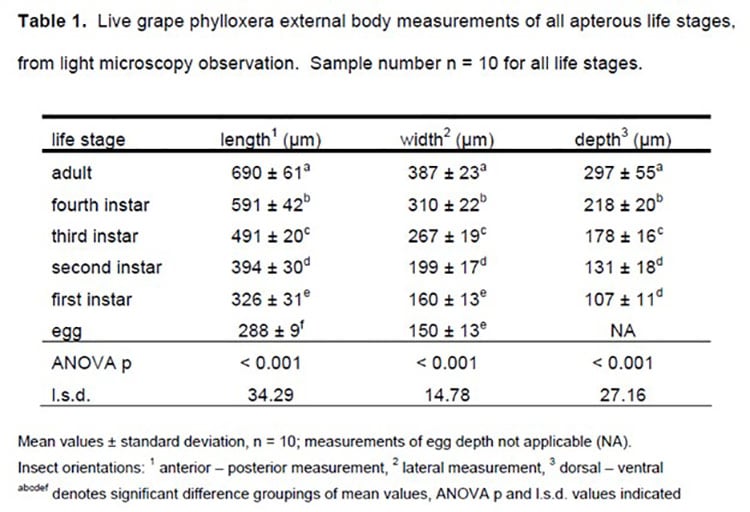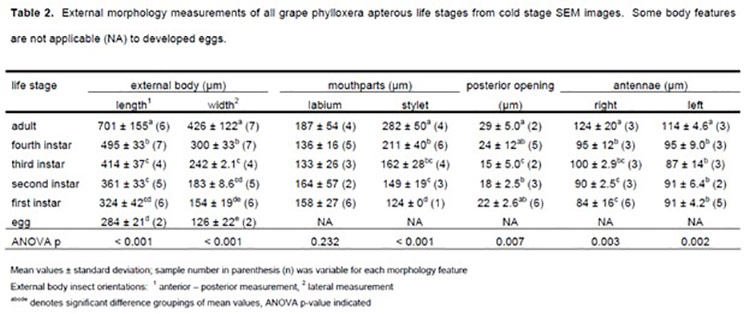In our January 2021 e-news, we discussed importation requirements into SA under Condition 7 for grape and grape-related materials. In this issue, we talk about the relevance of 50 microns for juice filtration.
The requirements associated with the movement of grape juice centre around whether that juice is unfiltered and therefore potentially contains phylloxera – or treated in a manner to remove any phylloxera present. These treatment options of filtration, centrifugation or cold settling are focused on removing the insect pest. The smallest life stage of this pest’s lifecycle is the egg stage and therefore these treatments need to be able to remove any phylloxera eggs that might be present.
Grape juice that has been processed (filtered, centrifuged, cold settled or other) to a 50-micron filtration rating (or tighter) may enter unrestricted into South Australia and is not classified as a regulated product under the SA Plant Quarantine Standard.
According to a PhD completed by Kim Kingston in 2007, titled ‘Digestive and feeding physiology of grape phylloxera (Daktulosphaira vitifoliae Fitch)’ a series of phylloxera body measurements were undertaken using scanning electron microscopy and reported in Chapter 2. Refer Tables 1 and 2 below (note, the strain of root-feeding phylloxera was not disclosed and the sample numbers are quite limited).
From these studies, we can observe that the egg is the smallest life stage with a width of between 104-163 micron (0.104 – 0.163mm) and length of between 263-305 micron (0.263 – 0.305mm) (noting that these measurements are very comparable to those reported about 30 years prior).
Grape juice treatments must therefore successfully remove particles of this size. The current filtration rating set at 50 microns (0.05mm) would ensure that the eggs cannot pass vertically through a filter of this size.

